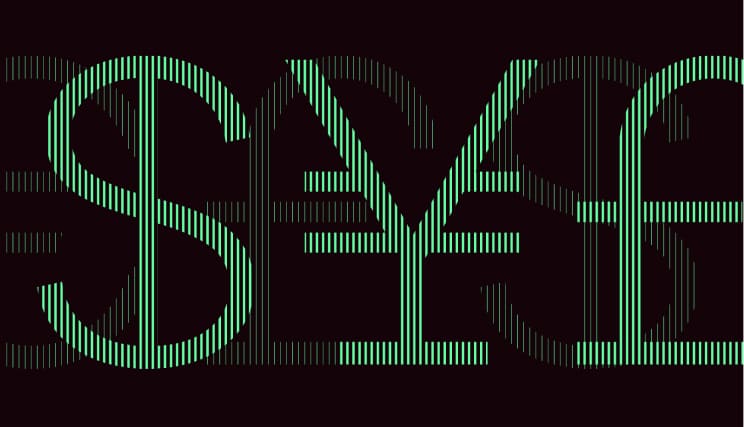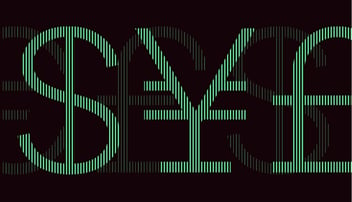Gain an overview of the latest developments on the currency market and anticipate fluctuation risks.
Warning
Volatility remains contained in the foreign-exchange market despite the forthcoming US presidential election, concerns about a recession and very weak European data. Nonetheless, there are some fluctuations in the market. This was the case in September for the Chinese yuan. It was even more severely and unexpectedly the case for the Japanese yen at the start of August against a backdrop of anaemic volumes. We think the worst is over for the yen. But this may not be true for the Swiss franc, which continues to strengthen against the euro. We do not rule out the possibility that the Swiss central bank could intervene in the market without warning. This is a major risk that is, alas, completely overlooked.
EUR/USD
High: 1.1212 Low: 1.1002 Change: -0.07%
Let’s be clear about it: economic data are execrable in the eurozone. Activity in the German manufacturing sector is at its lowest point since the global lockdown of March 2020. In France, the situation is hardly any better. The Olympic Games effect has completely disappeared. So what has caused the appreciation of the EUR/USD? Following the Fed’s rate cut in September, investors are now seeking better returns than those offered by the US bond market, to the particular benefit of assets in euros. But be aware that this phenomenon is not set to last.
EUR/GBP
High: 0.8478 Low: 0.8311 Change: -1.22%
It’s a simple story with this pair. The trend is structurally downwards with a price target of 0.83. All technical indicators are pointing in this direction.
GBP/USD
High: 1.3442 Low: 1.3001 Change: +1.60%
In the wake of the monetary policy status quo decided on by the Bank of England in September, sterling reached its highest level against the US dollar since March 2022. As is often the case, the monetary policy differential is a powerful driver of the exchange rate. This clearly favours a sustained appreciation by the GBP/USD pair, probably continuing throughout much of next year.
EUR/CNH
High: 7.9700 Low: 7.8284 Change: -1.19%
We had already warned you last year of those predicting a devaluation of the CNH to revive exports and growth in a context of stagnant credit. This did not materialise, and it will not do so in 2025 either. For the third time in 27 years, China is set to miss its 5% growth target for 2024. But the government clearly wants to avoid the same mistakes as in 2015 and will not opt to boost its competitiveness through a currency devaluation. We think it is in Beijing’s interest to have a fairly stable currency, particularly against the dollar but also against the euro.
EUR/CHF
High: 0.9509 Low: 0.9324 Change: -0.49%
The Swiss National Bank has done what was expected of it. As has always been the case (more or less), it continues to align its monetary policy with that of the European Central Bank. The 25 basis-point rate cut in September is surely not the last one. We still fear the central bank will intervene directly in the foreign-exchange market to counter the strength of the Swiss franc. Be vigilant if you are exposed to this currency. This is a major risk that is currently overlooked by the market.
EUR/CAD
High: 1.5163 Low: 1.4849 Change: +0.01%
The Canadian dollar continues to fall: -2.51% over the past three months and -2.70% since January against the euro. The CAD is suffering in particular from plunging energy prices because of weaker demand from China. To judge by Canadian data, especially those relating to the job market, we think monetary policy is still far too restrictive. Further rate cuts are inevitable.
EUR/AUD
High: 1.6629 Low: 1.6067 Change: -2.00%
The decoupling of monetary policies is systematically a powerful driver of exchange rates, at least in the long term. The EUR/AUD is a good illustration of this. The trend is predominantly favourable for the Australian dollar since rate cuts are not expected to get underway before February 2025, whereas in the eurozone rates have already been cut by 75 basis points in three meetings and an acceleration of this movement is possible.
EUR/JPY
High: 162.90 Low: 155.15 Change: -1.17%
Throughout September, speculators and financial intermediaries raised their long positions in the yen. These positions are now at their highest point since October 2016. This is largely the consequence of the rate-tightening process launched by the Bank of Japan. Although it refrained from adjusting rates last month, it is likely to do so in December with another 10 basis point hike. This should be a structural support for the yen against the euro and the dollar.
EUR/HUF
High: 397.63 Low: 392.12 Change: +0.87%
There is not much to say about this pair. As has been the case in the past six months, we expect it to continue trading within its range of 380 to 400, which the Hungarian authorities appear to be happy with. Monetary policy is no longer a differentiating factor and, as long as the conflict between Brussels and Budapest is contained, there is no reason to think the forint will weaken significantly.
USD/HUF
High: 360.73 Low: 351.12 Change: +0.84%
At iBanFirst, the strength of the dollar is one of our strong convictions. This is not shared by everyone. The dollar index is currently overvalued by 9.4% against a basket of major currencies. That is significant, but it is not dramatic either. In the 1980s, the dollar’s overvaluation reached more than 20%. Because of geopolitical uncertainties, the double US deficit and the country’s economic and stockmarket outperformance, capital flows will structurally be recycled on the other side of the Atlantic. This is not set to change overnight. This is why we have an upward position on the USD/HUF.
Economic Calendar
| DATE | CURRENCY | EVENT |
| 1-7/10 | CNH |
Golden Week |
| 04/10 | USD |
US employment figures |
| 10/10 | USD |
US inflation figures |
| 17/10 | EUR |
Central bank meeting |
| 22/10 | HUF |
Central bank meeting |
| 23/10 | CAD |
Central bank meeting |
| 27/10 | JPY |
General elections |
| 31/10 | JPY |
Central bank meeting |
Topics




